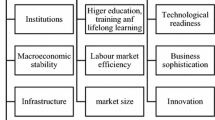Abstract
In the past 10–15 years, several discussions and/or paradigmatic hypotheses have stemmed from the more relevant economic and territorial international scientific theories of the 90s, EU political reports, declarations and directives with regard to both competitiveness and sustainability. Recently, their critical revision has permitted a definition of the question of the discussion about the Lisbon and Gothenburg Strategy in Europe: how to be competitive in sustainability and review the concepts of sustainability and competitiveness in the European territorial dimension by new criteria and indicators of measure. This paper wishes also to evidence, as in order to apply the updated Lisbon and Gothenburg Strategy goals it should be, to introduce a real territorial dimension into assessment processes, developing them by the new Structural Funds 2007–2013. An ex ante analysis of the impacts of these strategies 2000–2006 and a new methodological approach was useful for both these scopes. These ambitious goals were developed into the ESPON Programme, developing four key “determinants” or composite indicators as very significant expression of the two strategies.
Similar content being viewed by others
Author information
Authors and Affiliations
Corresponding author
About this article
Cite this article
Prezioso, M. Is it possible to give the territorial dimension more relevance for choices of competitiveness and sustainability policies?. Transit Stud Rev 15, 1–19 (2008). https://doi.org/10.1007/s11300-008-0165-4
Accepted:
Issue Date:
DOI: https://doi.org/10.1007/s11300-008-0165-4
Keywords
- Lisbon and Gothenburg strategies
- Competitiveness
- Territorial dimension
- Sustainable development
- Territorial impact assessment
- Polycentrism
- Cohesion




